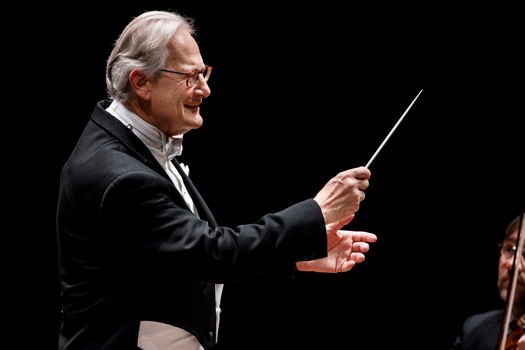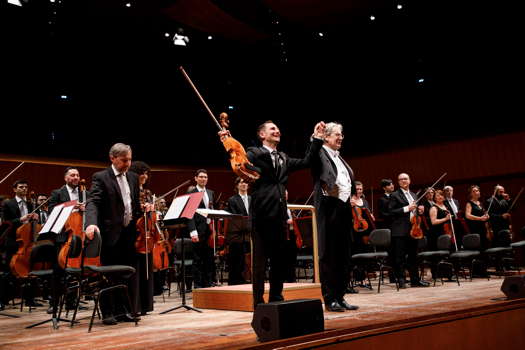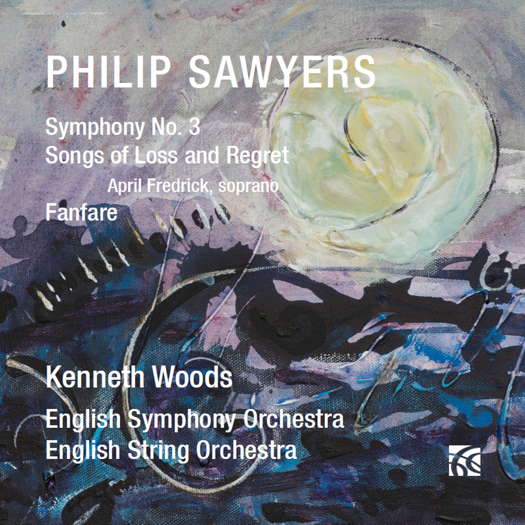- Charles Parry
- fifteenth century
- Eastbourne
- Anatoly Kremer
- Leon Fleisher
- Woltera Wansink
- Valery Khalilov
- Roland Wood

Sir John and Romantic Music
GIUSEPPE PENNISI describes
an English conductor's visit to Rome
an English conductor's visit to Rome
In Italy, Sir John Eliot Gardiner is well known and well appreciated mostly for his work on baroque music and composers. Consequently, it was quite a surprise when the National Santa Cecilia Academy announced, in its symphonic season, a concert of Romantic music conducted by him. Furthermore, the concert - three performances from 14-15 March - was a special event to commemorate the 150th anniversary of Hector Berlioz's death. The concert included two compositions by Berlioz - Carnaval Romain and Harold en Italie - and, in between these two symphonic poems, Antonín Dvořák's Symphony No 7 in D. A truly romantic program. Most likely, it is part of a wider plan to gradually adjust the rather conservative subscribers to innovation. I attended the last performance on 15 March 2019; the vast auditorium - nearly three thousands seats - was full.

John Eliot Gardiner conducting in Rome. Photo © 2019 Musacchio, Ianniello & Pasqualini
On 8 May, Sir John will be back in the huge Sala Santa Cecilia for a non-subscription performance of one of Handel's best known and most familiar opera to baroque fans, Semele. He will be with the Monteverdi Choir and the English Baroque soloists, including Carlo Vistoli, who received ovations at his recent performance of Gluck's Orfeo ed Euridice in Rome at the Teatro dell'Opera. (Read my review: A Noble Simplicity.)
Berlioz called Carnaval Romain an overture. Rather, it is a short symphonic poem in three movements - Allegro assai con fuoco, Andante sostenuto and Allegro vivace. It is part of the first act of the opera Benvenuto Cellini which I reviewed some three years years ago in Music & Vision Magazine. In the opera, the description of the Carnival is a moment of relief from a very dramatic situation in the development of the plot. In the overture or short symphonic poem, the joy and the confusion of the Carnival is described vividly with some echoes of the period when Berlioz lived in Rome as a fellow of the Académie de France in Villa Medici. Berlioz's Carnaval Romain is often included in the symphonic seasons of the National Santa Cecilia Academy. Gardiner gave a very vibrant start to the Allegro assai con fuoco and emphasized the melodic aspects of the Andante sostenuto.
Berlioz referred to Harold en Italie as a symphony in four parts with a viola soloist. In my view, it is also a symphonic or tone poem, due to its descriptive content. It is much longer than Carnaval Romain - forty versus ten minutes - and based on a lyric novel by Lord Byron. Byron's text is full of melancholy. Sir John described the four situations very well: Harold in the mountains (from sadness to joy), the Pilgrims' march while they sing the evening prayers, a peasant's serenade to the girl he is in love with, and the bandits' orgy. Antoine Tamestit and his viola created a dialogue with the huge orchestra in a virtuoso manner.

Antoine Tamestit and John Eliot Gardiner share the applause for Harold in Italy. Photo © 2019 Musacchio, Ianniello & Pasqualini
They added a special touch to their rendering of the score: the remembrance of a seldom-performed Berlioz masterpiece: the monodrama Lélio ou le retour à la vie which, in the composer's intentions, should have been the second part of an evening started with Symphonie fantastique.
Dvořák's Symphony No 7 in D is the composer's closest work to those by Brahms, a truly romantic exercise in happiness and sorrow, the key elements stressed by Sir John.
The audience was enthusiastic. I trust I will see many of the listeners again on 8 May.
Rome, Italy




